Celebrating Vietnamese New Year and interesting facts
Celebrating Vietnamese New Year, or Tet Nguyen Dan, is one of the most important and culturally rich events in Vietnam, filled with fascinating traditions and rituals that reflect the country’s deep-rooted history. Understanding these traditions will not only enhance your appreciation of the holiday but also offer insights into the significance of this beloved celebration. Join Vietnam Motorbike Tours Club to learn more about this biggest holiday of the year through the article below.
What is Vietnamese New Year?
Vietnamese New Year, known as Tet Nguyen Dan or simply Tet, is the most significant and eagerly anticipated festival in Vietnam, marking the arrival of the lunar new year. Celebrated between late January and February, depending on the lunar calendar, Tet is a time of deep cultural significance, filled with vibrant traditions, family reunions, and joyful festivities.
Purpose of celebrating Vietnamese New Year
Tet symbolizes renewal and the promise of a fresh start. It is a period dedicated to honoring ancestors, paying respects to family traditions, and setting intentions for the year ahead. The celebration is rooted in the belief that the way you start the year will influence the rest of it, so people focus on cleaning their homes, settling debts, and performing rituals to attract good luck and prosperity. Festive foods, such as Banh Chung (square sticky rice cakes) and special dishes, play a crucial role in the celebrations, reflecting the importance of family and tradition.
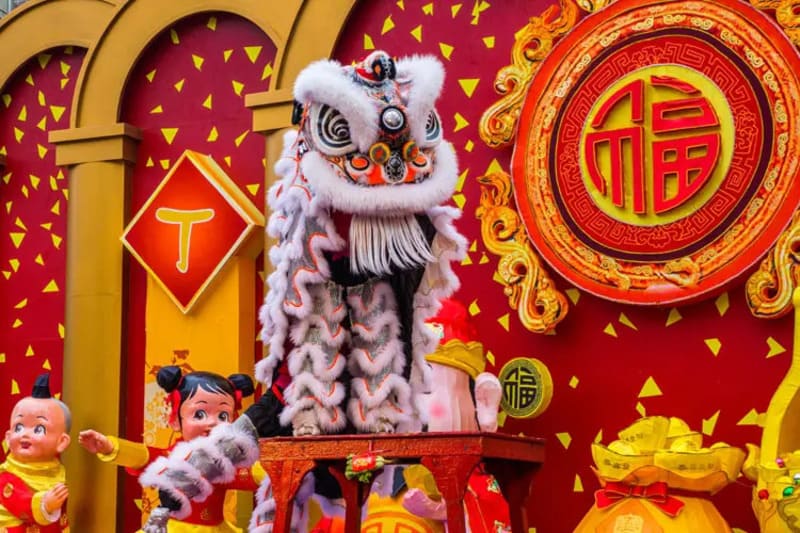
Differences between celebrating Vietnamese New Year and Western New Year
Understanding the differences between Vietnamese New Year and the regular New Year can enhance your appreciation of each celebration. Vietnamese New Year, or Tet Nguyen Dan, is a significant cultural event with unique traditions and timing, distinct from the Gregorian New Year celebrated on January 1st. Here’s a clear comparison to highlight the key differences:
Timing
Vietnamese New Year, or Tet, is based on the lunar calendar and falls between late January and February, varying each year. In contrast, the regular New Year is celebrated on January 1st according to the Gregorian calendar.
Cultural Significance
Tet is deeply rooted in Vietnamese traditions, focusing on family reunions, ancestral worship, and cultural rituals. The regular New Year is more globally recognized, often emphasizing parties, resolutions, and celebrations.
Traditional Practices
Vietnamese New Year includes specific customs such as cleaning homes to rid them of bad luck, preparing traditional foods like Banh Chung, and participating in Tet-specific festivals. The regular New Year typically involves fireworks, countdowns, and social gatherings.
Celebratory Focus
Tet emphasizes new beginnings and securing good fortune for the year ahead, with a strong focus on family and cultural heritage. The regular New Year often centers around general festivities and personal resolutions for self-improvement.
See more: Celebrating Tet Trung Thu – Origin, Meaning and Customs
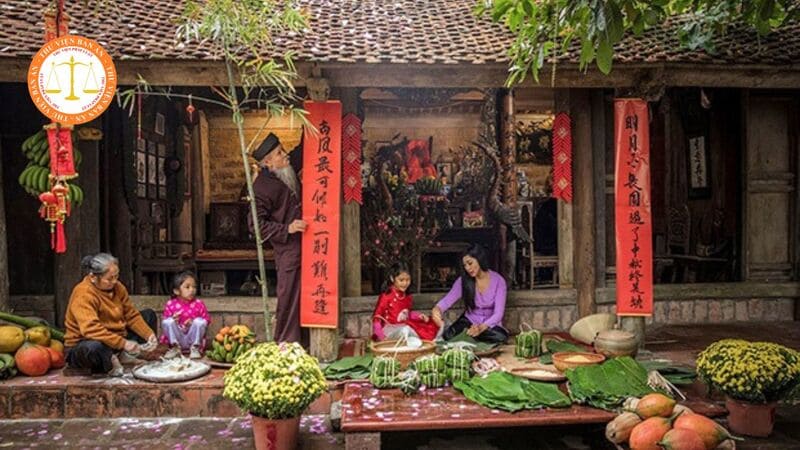
Red envelopes and New Year greetings
During Vietnamese New Year, or Tet Nguyen Dan, the tradition of giving red envelopes and exchanging New Year greetings is central to the celebration. These customs are deeply rooted in Vietnamese culture and play a significant role in spreading joy and good fortune for the year ahead.
Meaning Behind Red Envelopes
Red envelopes, known as “li xi,” are a cherished tradition during Tet. They are typically filled with money and given to children, unmarried adults, and elders as a symbol of good luck and prosperity. The color red is believed to ward off evil spirits and bring positive energy, making these envelopes a powerful token of well-wishing and fortune for the new year.
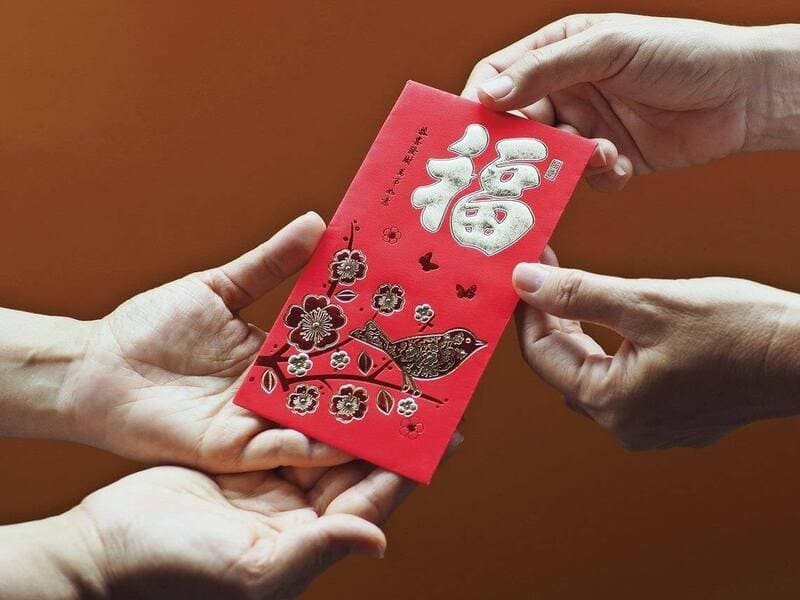
Popular New Year greetings
New Year greetings are another vital aspect of Tet, used to convey heartfelt wishes for the upcoming year. Some of the most popular Tet greetings include:
- “Chuc Mung Nam Moi” (Happy New Year)
This is the most common and widely used greeting during Tet, and it translates directly to “Happy New Year.” It is a universal phrase exchanged among family members, friends, colleagues, and even strangers as a way to wish joy, health, and good fortune for the upcoming lunar year. The phrase reflects the spirit of renewal, happiness, and hope that defines the Vietnamese New Year celebrations, making it the go-to greeting throughout the festive season.
- “An Khang Thinh Vuong” (Wishing You Security and Prosperity)
This greeting conveys a deeper wish for personal and financial stability in the new year. “An Khang” refers to security and peace, while “Thinh Vuong” expresses a desire for prosperity and success. This phrase is often used when addressing elders, business partners, or people in positions of responsibility, as it encompasses wishes for both a safe and thriving year ahead. It’s a thoughtful and respectful way to acknowledge someone’s efforts and hope for their continued growth and well-being.
- “Vạn Sự Như Ý” (May All Your Wishes Come True)
This phrase is a warm and personal greeting that conveys hope for someone’s deepest desires and goals to be fulfilled in the new year. “Vạn Sự” means “everything,” and “Như Ý” translates to “as you wish,” together forming a message that all of life’s endeavors and aspirations will come to fruition. It is a heartfelt way to express good intentions and is often shared among close friends and loved ones, highlighting the importance of personal happiness and achievement in the new year.
These greetings are exchanged among family, friends, and colleagues, enhancing the festive atmosphere and reinforcing the spirit of hope and renewal that defines Vietnamese New Year.
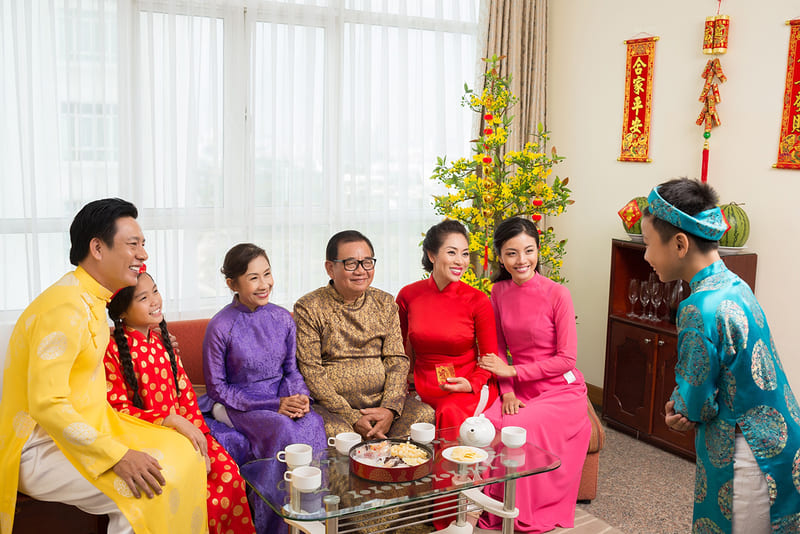
Preparations for celebrating Vietnamese New Year
Celebrating Vietnamese New Year, or Tet, involves a series of important preparations to ensure a prosperous and joyful year ahead. In the days leading up to Tet, families across Vietnam get ready by engaging in traditional activities that reflect the importance of a fresh start and honoring their ancestors. Here is a list of things people usually prepare for before Tet starts:
Cleaning the house
One of the first and most important tasks when preparing for Tet is thoroughly cleaning the home. Families believe that cleaning sweeps away bad luck and misfortune from the previous year, making room for positive energy and good fortune. Everything from dusting to scrubbing floors is done to ensure the house is spotless by the time the new year begins. It’s also believed that once Tet starts, no cleaning should take place, as it could sweep away the newly arrived good luck.
Decorating with flowers
Decorating the home with flowers and plants is another essential part of Tet preparations. Each flower has its own symbolic meaning. Peach blossoms are popular in the north, representing peace and prosperity, while yellow apricot flowers are favored in the south, symbolizing luck and wealth. Kumquat trees, with their golden fruit, are another Tet favorite, representing abundance and happiness. These plants and flowers not only brighten the home but also serve as symbols of growth and success in the coming year.
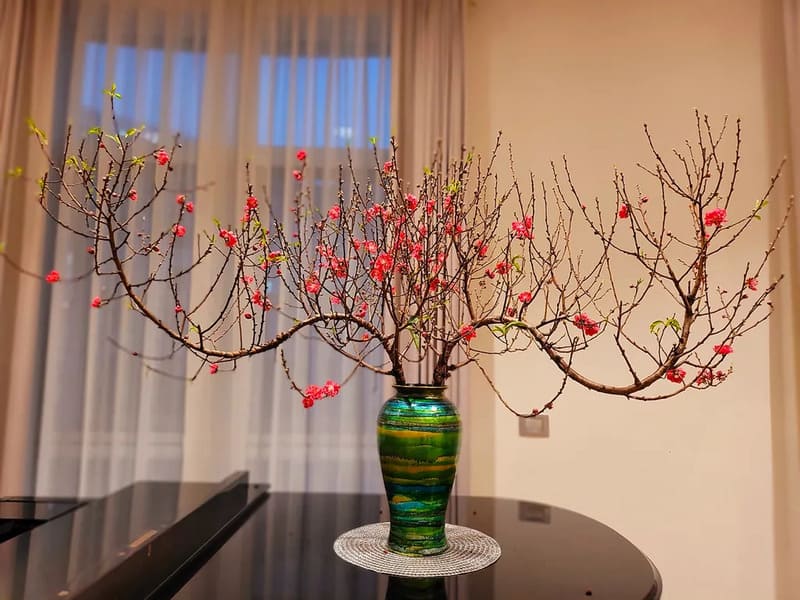
Preparing traditional foods
Food preparation is central to celebrating Vietnamese New Year, with certain dishes holding special cultural significance. Banh Chung (square sticky rice cakes) and Banh Tet (cylindrical sticky rice cakes) are among the most important, symbolizing the earth and sky and the harmony between nature and humans. Families spend hours, sometimes even days, preparing these dishes. Other foods like pickled onions, boiled chicken, and candied fruits are also prepared as offerings and meals for family gatherings. These dishes reflect the country’s agricultural roots and the importance of abundance and unity.
Buying new clothes
It is customary for people to buy and wear new clothes during Tet, especially in bright, lucky colors like red, which symbolizes good fortune. New clothes represent a fresh start and are often worn when visiting family, friends, or attending Tet festivities. For children, receiving new clothes is a special treat, and wearing them is believed to bring blessings and good luck for the year ahead.
Setting up ancestral altars
Another vital part of Tet preparations is setting up or refreshing the family’s ancestral altar. Families prepare offerings of fruit, food, flowers, and incense to honor their ancestors, inviting them to join in the celebration and bring blessings to the household. The altar becomes a focal point during Tet, where family members pray and show gratitude to those who came before them. The act of ancestral worship during Tet is a meaningful way of connecting with family history and ensuring prosperity for future generations.
Celebrating Vietnamese New Year, or Tet, is an unforgettable experience filled with vibrant traditions, delicious food, and heartfelt family reunions. Join Vietnam Motorcycle Tours in this festival by registering for the tour today!
Contact us for more interesting information
- Address: 3/7/36 Duy Tan Street, Cau Giay District, Ha Noi City
- Mobile: +84 976 024 986
- Email: [email protected]
- Website: https://vietnammotorbiketoursclub.com/
RELATED POSTS

Visiting Vietnam In March 2025? Top 10 Hottest Destinations
March is an ideal time to travel, with pleasant weather and fresh air, leaving many wondering which destination to choose. If you are also looking...

The Ultimate Guide to Visiting Vietnam In April 2025
April is a unique transitional period in Vietnam, bringing a pleasant atmosphere that is perfect for travel. It’s when the country blends the lingering coolness...

Ghenh Da Dia Phu Yen – A beautiful check-in location for tourists
Ghenh Da Dia Phu Yen – a unique natural wonder of Vietnam, where basalt rocks are stacked like giant honeycombs creating a magnificent picture in...




